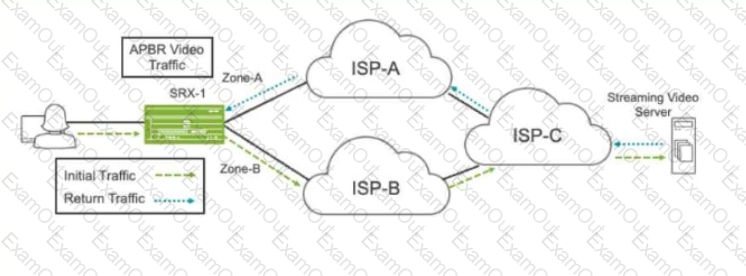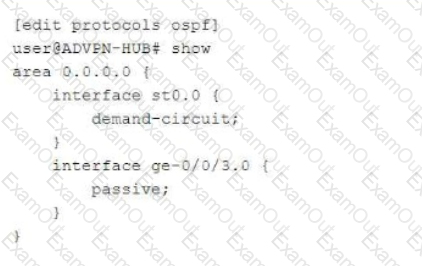The exhibit shows part of the flow session logs.

Which two statements are true in this scenario? (Choose two.)
Which three statements about persistent NAT are correct? (Choose Three)
Which two elements are necessary to configure a rule under an APBR profile? (Choose Two)
You want to create a connection for communication between tenant systems without using physical revenue ports on the SRX Series device.
What are two ways to accomplish this task? (Choose two.)
In a multinode HA environment, which service must be configured to synchronize between nodes?
You are deploying threat remediation to endpoints connected through third-party devices.
In this scenario, which three statements are correct? (Choose three.)
You want to enable transparent mode on your SRX series device.
In this scenario, which three actions should you perform? (Choose three.)
Exhibit:

Referring to the exhibit, a default static route on SRX-1 sends all traffic to ISP-A. You have configured APBR to send all requests for streaming video traffic to ISP-B. However, the return traffic from the streaming video server is coming through ISP-A, and the traffic is being dropped by SRX-1. You can only make changes on SRX-1.
How do you solve this problem?
An ADVPN configuration has been verified on both the hub and spoke devices and it seems fine. However, OSPF is not functioning as expected.

Referring to the exhibit, which two statements under interface st0.0 on both the hub and spoke devices would solve this problem? (Choose two.)
You need to set up source NAT so that external hosts can initiate connections to an internal device, but only if a connection to the device was first initiated by the internal device.
Which type of NAT solution provides this functionality?

